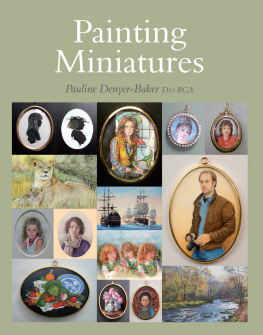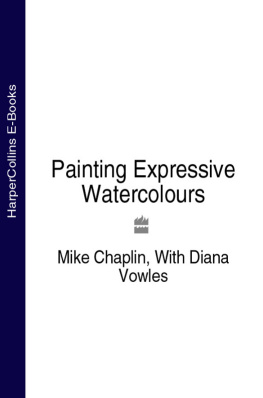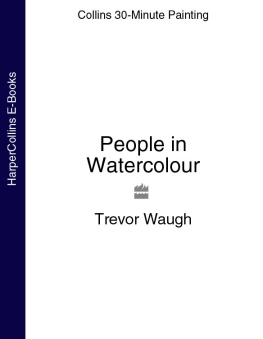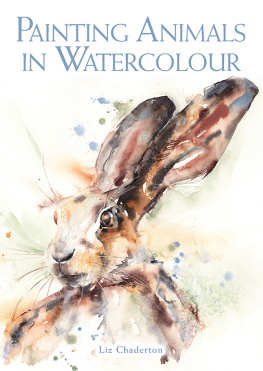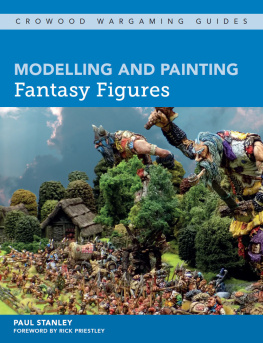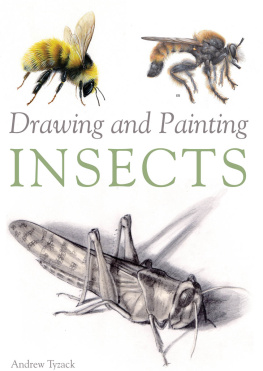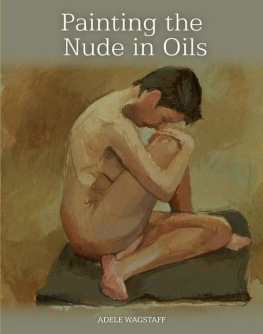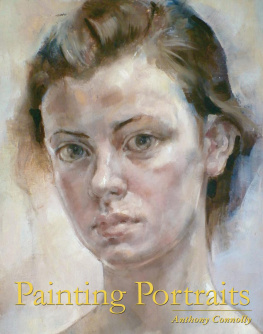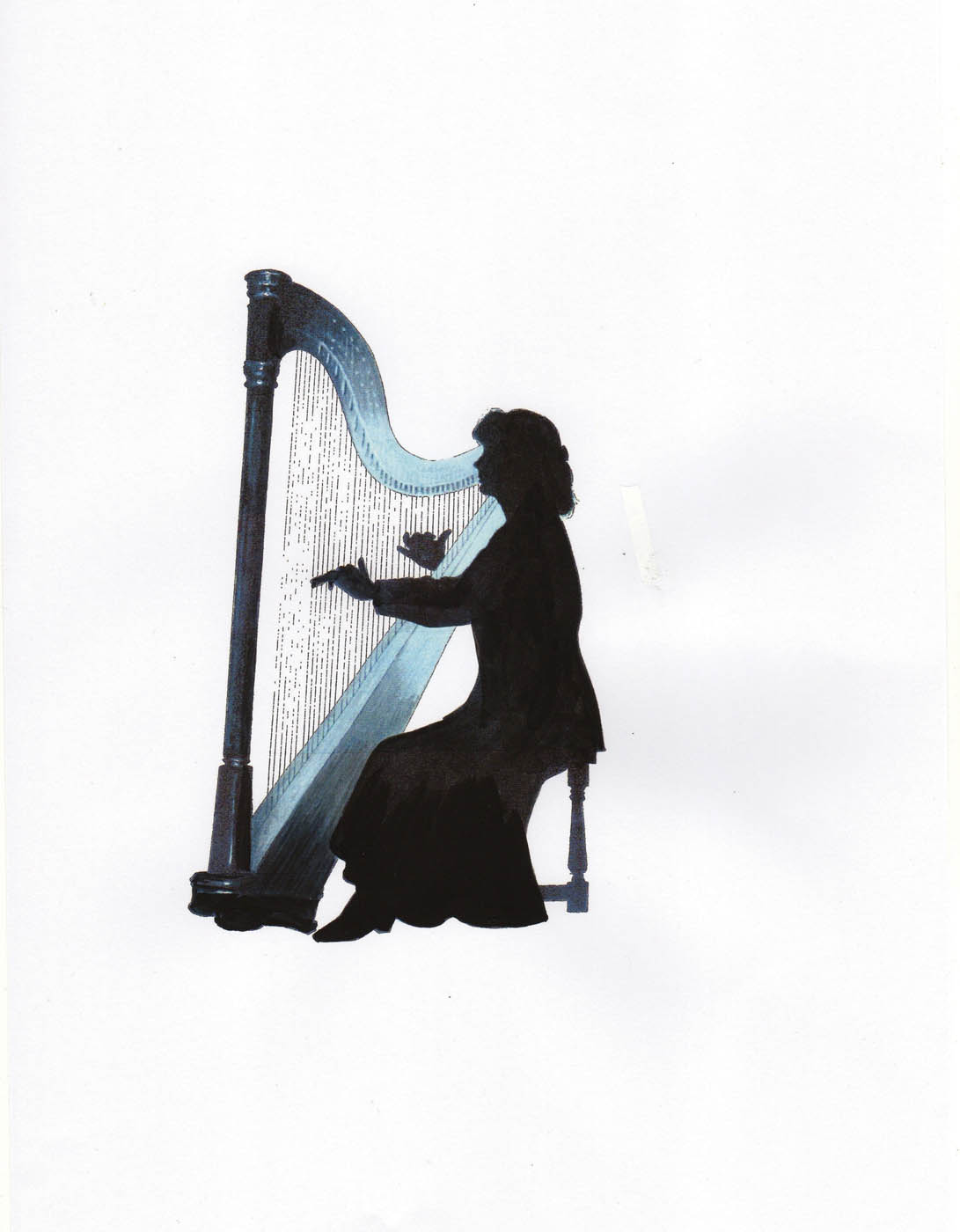
Painting
Miniatures
Pauline Denyer-Baker D ES RCA

THE CROWOOD PRESS
First published in 2014 by
The Crowood Press Ltd
Ramsbury, Marlborough
Wiltshire SN8 2HR
www.crowood.com
This e-book first published in 2015
Pauline Denyer Baker 2014
All rights reserved. No part of this publication may be reproduced or transmitted in any form or by any means, electronic or mechanical, including photocopy, recording, or any information storage and retrieval system, without permission in writing from the publishers.
British Library Cataloguing-in-Publication Data
A catalogue record for this book is available from the British Library.
ISBN 978 1 84797 841 7
Frontispiece: Lady with a Harp by Michael Pierce
Acknowledgement and Dedication
First of all I have to thank my son Rupert (who is also a portrait painter), without whose help I could not have organized this book on my computer, and my husband Brian for his design of the covers, his input on perspective, and his patience, as I worked slowly through it all. Also my eldest son Brendan for his patience too, and for explaining to my grandchildren how busy Grandma was!
I have written it for all the good friends I have made whilst teaching Miniature Painting, some of whom helped me on my way, and are no longer here.
Finally I dedicate this book to Molly Lefebure Gerrish, and her husband John, who encouraged Brian and myself as we pursued our artistic careers in the early days, and helped to make us succeed. Molly, who was a well known writer herself, would have been so pleased to know I had written this book, but they both missed the news by just a few weeks. I am indebted to them both for the inspiration they provided to me and my family.
CONTENTS
INTRODUCTION
It is commonly misunderstood that any painting is a miniature if it is small or very small; however, this is not true. A miniature work is quite different for several reasons. It is important to understand this, because if you really want to learn how to paint in miniature, it is probably surprising to find out how the techniques and methods of painting miniatures differ from the traditional methods of landscape, portrait and still life painting.
Societies of miniature painters do have certain rules and regulations, and broadly speaking, the subjects have to be life size. This makes painting insects or small flowers and birds difficult, so most of these societies will look at the subject and, if painted in exquisite detail and with great care, they will accept these works for their exhibitions, as long as they adhere to the overall size of 6.5 inches 4.5 inches including frame and mount.
Reduced photocopies of larger works may not be submitted, as each work has to be painted completely by hand. Small etchings are also allowed, but each one must be printed by the artist himself. This means that no one can churn out miniatures quickly! But if like me, you love to paint in detail, in a small format, with colour and precision, then the miniature technique will appeal to you.
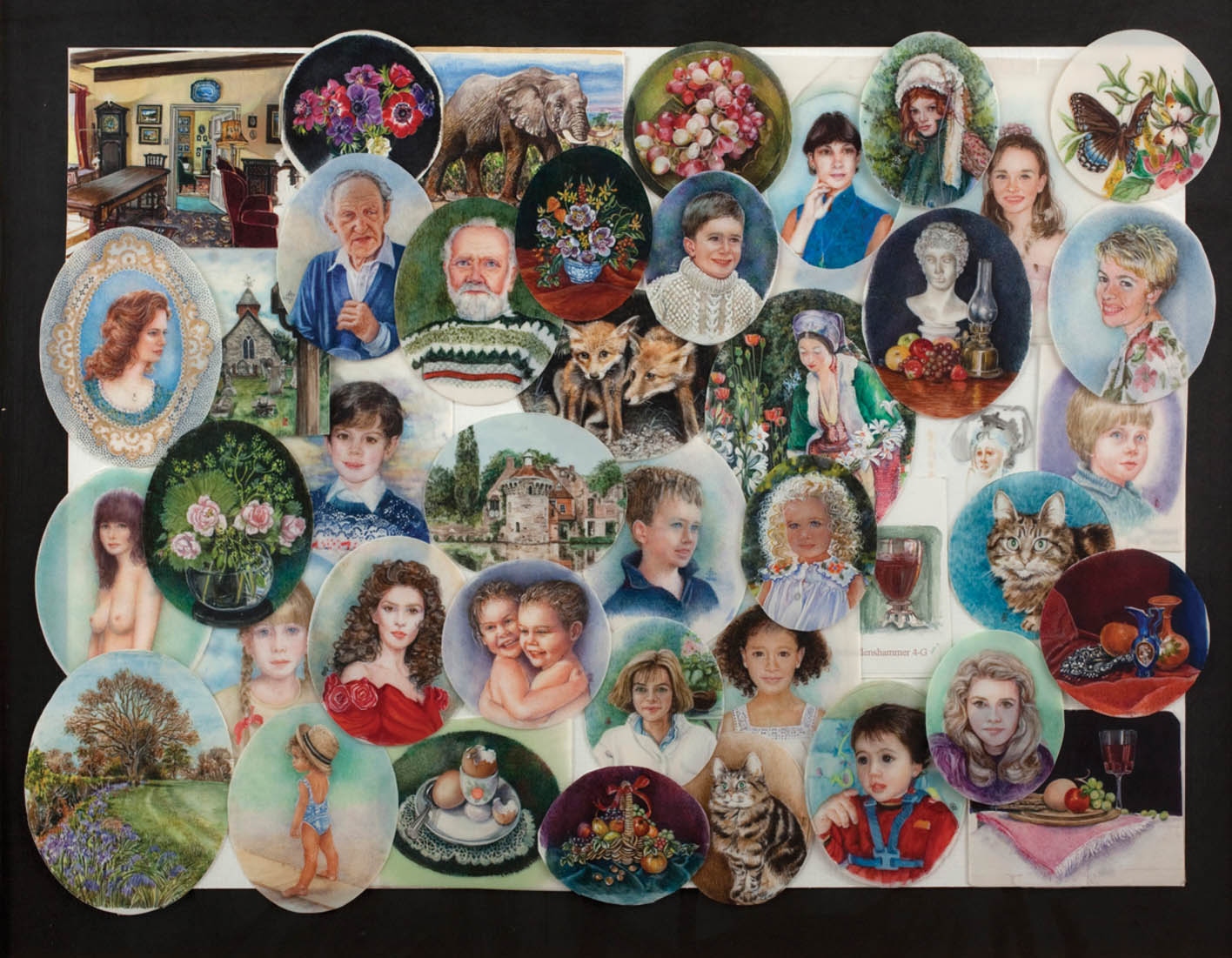
I put this collage of my work together, forty-two pieces in all, because I wanted to enter them for the RA summer exhibition 2006 called Rejects and they were of course.
Although I had a formal Art School training, and learnt to draw and paint with various media and objects, I have always been fascinated by the fine details of the subjects I was trying to represent. I was taught life, costume life drawing, anatomy, classical architecture and studied paintings and the History of Art.
During the first two years I studied Fine Art (under the late Charles Knight RWS, who passed on so much of his knowledge to his students in an unselfish and enthusiastic manner), and this basic training was invaluable in my career as a designer and latterly as a portrait miniaturist. It was very important when I became a visiting art tutor at further education colleges in southeast England.
Eventually, but only after spending some more time studying portraiture, and miniatures in particular, I began to teach both of these disciplines to adults on leisure courses.
After having taught portraiture and miniature painting over the past twenty years I realized that there was a great need for a more comprehensive book on the techniques and all aspects of painting miniatures for the twenty-first century. It became an ambition of mine to write this book, in order to pass on some of the knowledge that was once given so generously to me.
Looking and perceiving
I was taught to perceive: not to just look, but to look twice and draw once! Please think hard about this concept, and make sure you understand the difference between looking and perceiving. Looking at a subject, such as a landscape, you appreciate it for its beauty, but if you are perceiving it, you are taking it into your brain, with the intention of painting or drawing the atmosphere, colour and life of what is before you.
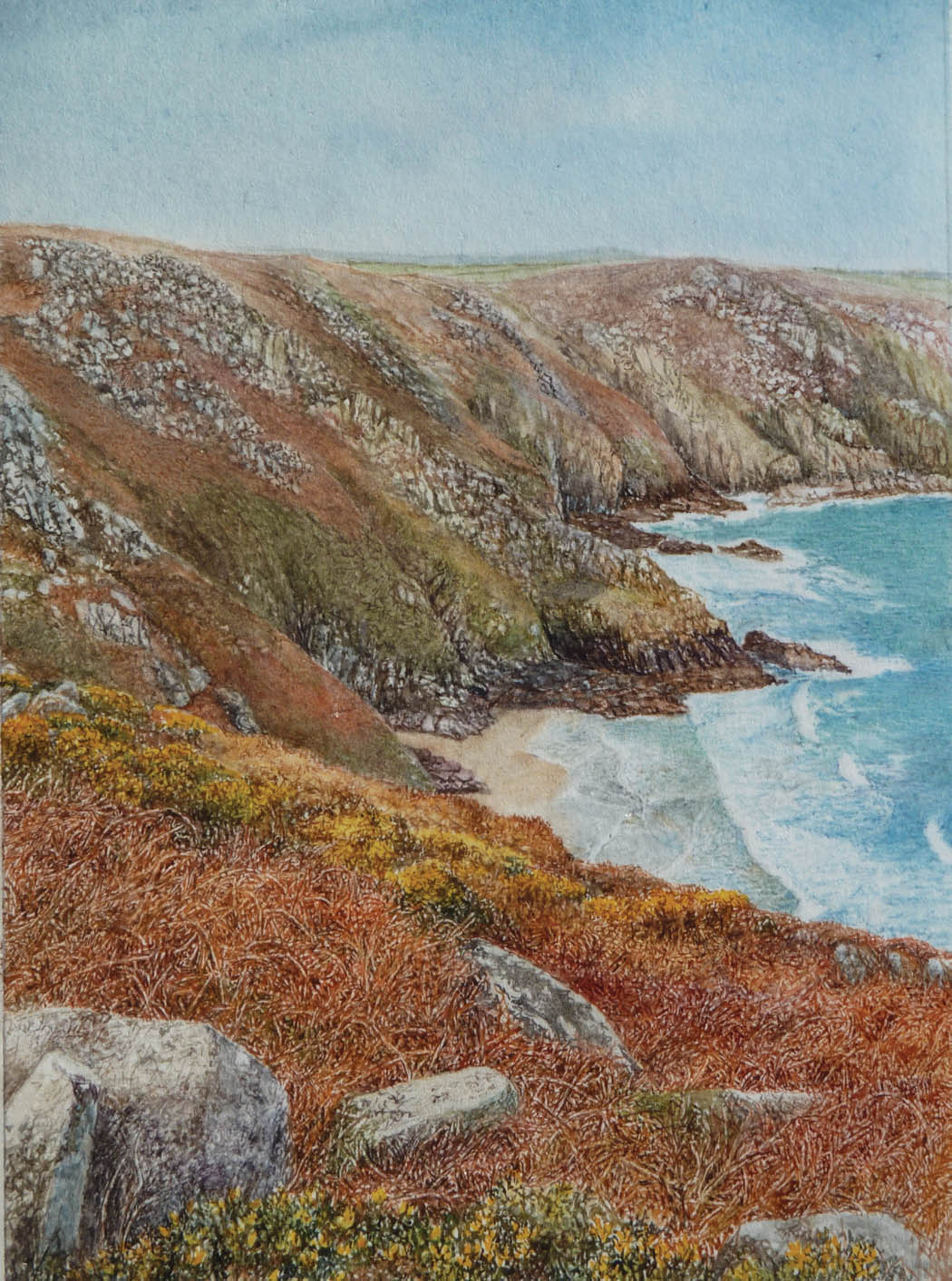
This painting by Roz Peirson, who uses watercolour on paper, is of the Cornish coast at Zennor, for which she was awarded the Gold Bowl at the RMS exhibition in London 2012.
Drawing
It cannot be stressed too much how important it is to be able to draw, a skill that can be learned if the student is prepared to study and practise. Unfortunately, learning how to draw in the art schools these days is not a top priority, and because it has not been considered necessary for such a long time, it is probable that some of the tutors do not have the drawing skills to pass on the new students. Those students who succeed are those have a natural talent for drawing, or those who are prepared to work at it and study the basic principles of it such as anatomy, perspective architecture and landscape.
Sketchbooks
It is very important to keep a sketchbook in which to jot down ideas and make sketches regularly; it soon becomes second nature to try to get down the essentials of the subject. You will get used to looking carefully at your subjects (perceiving), in an effort to represent them accurately in your sketches, and ultimately in your artworks.
Especially where portraits are concerned, studies of faces, made in pencil or with colour, seem to help imprint the image in the mind, so that when it comes to getting a likeness, the brain is able to recall the personal characteristics. A sketchbook is also a place where you can make mistakes, and try things out, without any restrictions or criticism from outside influences. For learning portraiture, it is very useful to work from facial expressions in magazines, because the features are very clear. It is useful to keep them for reference, so that when you have to draw a particular expression in a portrait, you will have some something similar with which to compare your drawing.
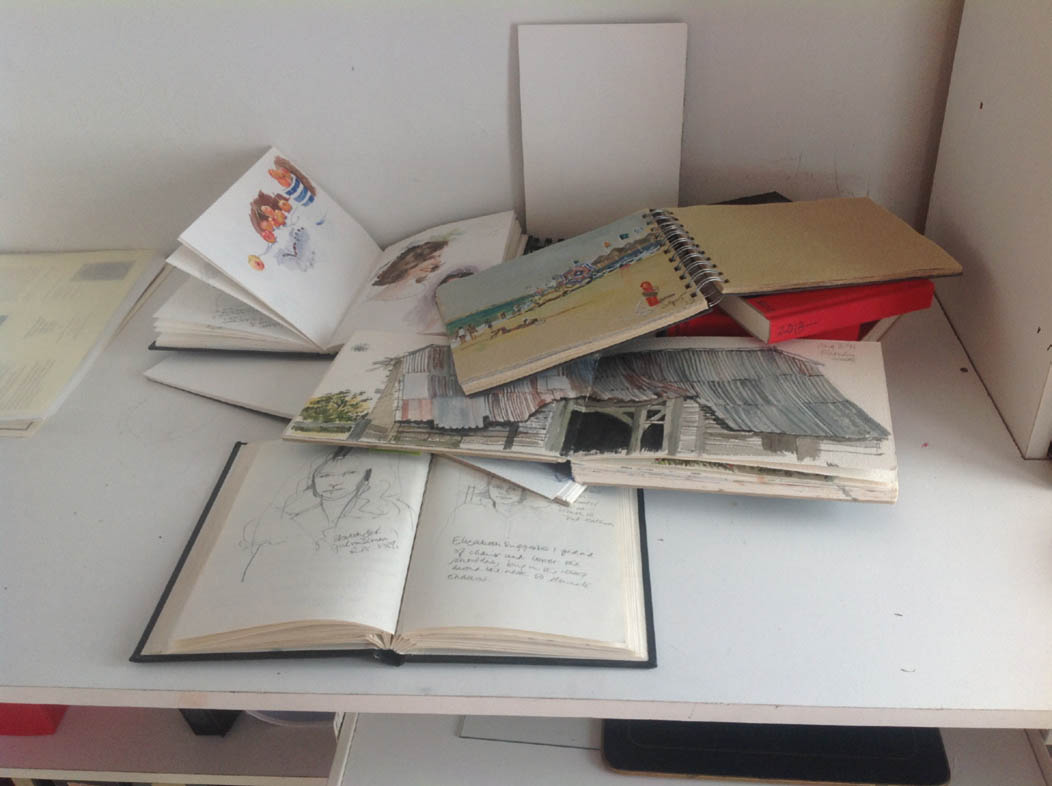
A small selection of my sketchbooks, in which I work out my miniatures in advance beforehand, which I consider a vital part of the success of my paintings.
Reference files
It is useful to keep a scrapbook of ideas. If a pattern or shape or colour appeals, cut it out and keep it; it may well come in useful on a later project. Keep a box file for these, as your collection will grow as you become more observant. The patterns and shadows are usually exaggerated in photographs, but this makes you aware of them and helps you to understand how important shadows are in getting form and distance into your works.
Next page
